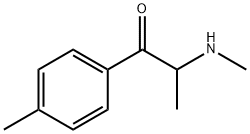Mephedrone hydrochloride salt is a white powder, whereas its
free base is a yellowish liquid at ambient temperature. Mephedrone
is typically sold as water-soluble crystalline stable
hydrochloride salt powder, white or lightly colored; most
probably as a racemic mixture of the R and S enantiomers. The
powder can be dissolved for oral/rectal use or for injection.
Mephedrone has also been found as capsules containing
powder and as tablets pressed from powder.
The effect profile and clinical presentations of mephedrone
intoxications share some features seen with MDMA and
cocaine (e.g., seizures, agitation, paranoia, hallucinations),
implicitly supporting a sympathomimetic activity of mephedrone.
Conversely, symptoms of depression and anhedonia
could be tentatively associated to a putative depletion of
serotonin and dopamine as a consequence of drug use, similarly
to what may occur with other stimulants. In fact, binge
administration of mephedrone (4 ×10 or 25 mg kg-1 sc per
injection), in a rat model, results in a rapid decrease in striatal
dopamine (DA) and hippocampal serotonin (5-hydroxytryptamine;
5-HT) transporter function. Like MDMA, but unlike
methamphetamine or methcathinone, repeated mephedrone
administrations also caused persistent serotonergic, but not
dopaminergic, deficits.
